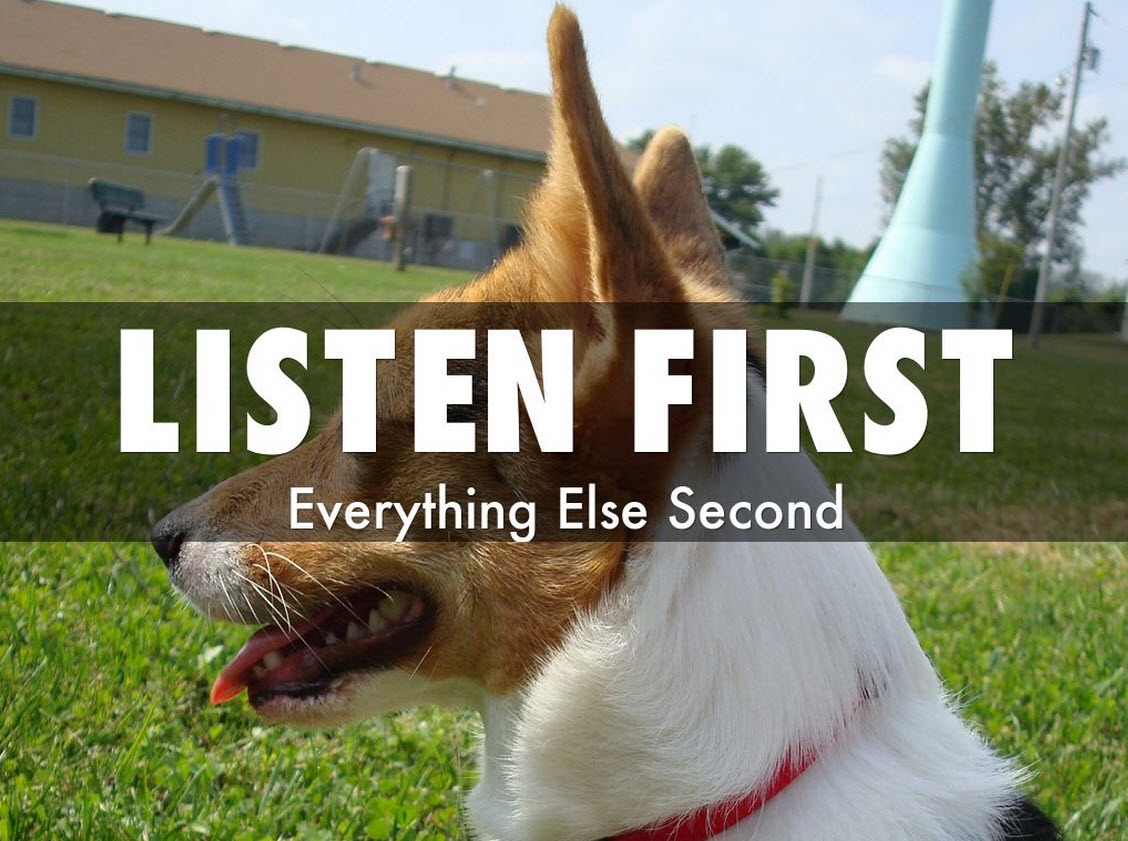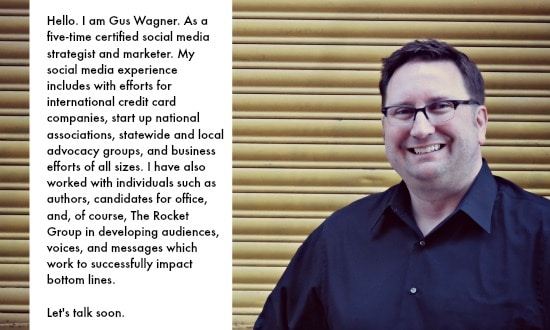Despite what you may have heard, thought, or been told, professionals in social media don’t just play online all day.
I thought I would run through a step-by-step analysis of procedures and planning for a typical day managing client social activities. This list is A) not time-based because the amount of time varies from day to day, B) not going to reveal the client or the area in which they practice…just know they have a total audience of 5,000+ and are dealing with important topics of the day, C) not set in stone or in order of action as flexibility is a key attribute of a successful social media professional.
What’s In It For Me: Learn the steps taken every day by social media pros, like TRG, to reach and impact audiences to further the success of your content mission.
Also, a truly good social media professional is almost always connected through their mobile device and working and monitoring the situation no matter where they are. (Usually closest to a power outlet.)
Review Social Interactions for Opportunities

Some say the first thing you should not do in the morning is to check your email, so I try not to. What I actually do is check my Hootsuite control panel for social media responses, retweets, favorites, Likes, Shares, etc. Then I set out to see who the folks were who interacted with the content from the previous day, night, or last scan of activity. Gratitude is shown to those who share our messages, especially if that sharing generated many web clicks, and connections are made with any new voices who are singing our song. If a new connection has really outstanding content of their own and it ties into our mission, we will then share or interact with something relevant of theirs to be good social media neighbors.
Scan, Review, Edit, Pause, and/or Create Paid Campaigns
Most days of the year we have paid campaigns going, especially on Facebook and Twitter, to promote important content to targeted audiences or put the account in front of more potential fans. One of the first things I do each morning is check those campaigns to make sure they are still delivering, what they have delivered in followers and clicks, and make any adjustments which need to be made. This could include increasing or decreasing budget, adding new messages or images, or changing targets and goals.
Check Stats from the Hours/Day/Week/Month Before
To be successful in social media, you have to know what the audience is interacting with. We normally check our Facebook Insights, Twitter Analytics, and Google Analytics on a daily basis. If something is catching a bunch of attention, clicks, and Shares, I can make decisions to promote those posts or create additional content with similar themes immediately. If you aren’t checking your stats frequently, you are really talking in a dark room with no idea if anyone else is in there with you. We are also able to see quickly if traffic is rising, falling, or maintaining compared to other time periods or topics.
Review New Fans and Followers for Leads and Spammers
Another daily task, and a critical one, is to check your social connections for new fans and followers. There may be a $1 million dollar lead who just Liked you on Facebook or there may be a dozen spammers who followed you on Twitter. You need to reach out to the legit new connections then block and report the spammers.
A few of the internet’s favorite things. We need to stop one of the three…you choose! #SMM pic.twitter.com/GotBRdgU1G
— Gus Wagner (@RocketGroup) May 23, 2015
Check the Headlines of the Day for Content Ideas or Consultations
Between social media, blogs, aggregators, and even (still) traditional media, there is no shortage of news and information out there for you to share with your audience or get content ideas from. For this client we have several sources which we scour every morning for ideas to educate, inform, and entertain their audience. Scheduling tweets of the hard news items throughout the day, create long form content based on (and referencing) others content, and recapping the events of the previous or current day for Facebook – where hard news doesn’t play as well – are just a few of the immediate actions we take every morning.
Know why there is some much “what not to do” #Marketing content online? Because you/we all keep making mistakes. pic.twitter.com/G2HF0NPDbB
— Gus Wagner (@RocketGroup) June 3, 2015
Read Your Own Timelines for Content to Share
While you are building thousands of followers and fans, you also need to be following and Liking influencers, media, and decision makers in your own industry. Reviewing your own timelines and newsfeeds for breaking or relevant content is an important step to take every day. That means every day of the week and every day of the year. News, like Greed ®, never sleeps.

Schedule and/or Review Planned and Scheduled Content
One of the beauties of a tool like Hootsuite is the power to schedule tweets. This client is working with an audience that is highly active from 7 AM to after 10 PM every day so we schedule evergreen content posts to go out throughout the day. Facebook is a different creature and will punish content published through a third-party tool so we use the internal schedule tool to publish at our peak times. Two rules to play by with scheduled posts: 1) be aware if some local/national/international news story breaks and check your scheduled items to pause or reschedule their publishing so you don’t look foolish in a time of tragedy and 2) don’t “just set it and forget it” as you will have to make sure your post was published, what the interaction is, and correct any errors you will, er, might make in the content or links.
See What the Other Guys (and Gals) Are Doing
Chances are you have competition, just as this client of ours does. Whether you are competing against other businesses, organizations, or nonprofits for revenue, awareness, or real estate, you’ll have to be aware of what they are doing. Our strategy here is to not follow or Like the loyal opposition on social media but to have lists, links, and tools in place to monitor their content and efforts. We check them out on a daily basis to see what they are up to, what their point of view is on common issues, and to stake out themes they are totally missing. You should too.
Make New Friends
Another growth strategy we employ is to check hashtags, conversations, and even lists of suggested accounts to connect with by the social media platforms to follow and Like similar and legit voices in the areas our client is concerned with. Going out and connecting with new “friends” on a regular basis is a great way to find supporting and new points of view and to grow connections which will help your own content find new audiences. Be sure to clean up the lists of your followers for dormant, dead, or spam accounts with a tool like CrowdFire.
Review Content Calendar
Just like most of us wouldn’t leave on a long trip without a map of some sort, you shouldn’t manage your daily social media activity without a plan. These are normally referred to as content calendars and can be as simple as a list of what actions you will take each day of the week to detailed Excel sheets for listing topics, titles, dates, and results (like this one). Either step, big or small, will get you headed in a better direction than you are currently going with your social media.
Prepare Social Media & Blog Posts
You’ll notice that we haven’t talked much about actual content creation. I will now but you need to see how much work we put into this effort before any words or pictures are created. By keeping your ears on for what the audience is actually interested in (versus pushing out what you want to talk about), investing time and resources into growing an effective audience for your efforts, and being interactive and responsive to the content of others, you will have a much greater success story for when you publish your own content. Preparing blog posts, whitepapers, and infographics for the client website is a dedicated and concentrated effort which runs parallel to the social audience observation and creation. Each blog post, unless it is very specific to current events, can ideally be used dozens of times for social media content. Crafting your content in smaller lengths, unique voices, or in digestible bits (like this one) can help you to have an “evergreen” article which will benefit you, and your audiences, for weeks, months, or even years.
Acquire, Create, and Edit Specific and Interesting Images for Web and Social Use
Words are only half the picture when it comes to social media content, pictures are the rest of the pictures. Images, graphics, and video will help you to stand out in a world of text on platforms like Facebook and Twitter. Inserting those images into your blog posts will enable your audience to share your messages in other platforms like Pinterest as well. You can take your own photos, buy stock photos, create graphics in a tool like Canva, and create short- or long-form videos (with a company like ours!) which will help your content to have even more impact on your audience. Most importantly, social media posts with accompanying images or video have interaction rates dozens of times higher than boring old text by itself.
So there you have it, a dozen steps to take on a daily basis if you want to truly have a social media success story of your own. Perhaps you can focus on some more than others or skip a step or two but, in our experience, you won’t be as successful in moving audience action, gaining greater awareness, or improving your bottom line if you do.
If you don’t follow a plan like this, you may as well just be playing on the internet all day.
What do you think? Email me at Gus@RocketGroupLLC.com, tweet me (where I will catch up the fastest) @RocketGroup, send up a flare, whatever, let’s talk.




